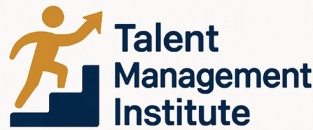
Understanding the Role of Diversity and Inclusion in Talent Management
Building a Foundation with Diversity and Inclusion
In today's globally connected world, diversity and inclusion (D&I) have emerged as pivotal elements in effective talent management. Recognizing the diversity within an organization fuels innovation and enhances the workplace environment. Inclusion, on the other hand, ensures that every person's voice is heard and valued, leading to heightened engagement and productivity. As we navigate through various awareness days and heritage months, such as June's Pride Month or International Women's Day in March, it's essential to ask: how do we integrate these elements into our talent management practices?
A strategic approach to D&I is crucial. For many organizations, a diversity and inclusion calendar becomes an effective tool to achieve this. It's more than just marking days on a calendar; it's about embedding a culture that respects and embraces differences, a process that spans weeks, months, and even long-term observances.
Considering significant events like Mental Health Awareness Week in October or Black History Month in February, understanding the cultural and historical contributions of a diverse workforce requires intentional engagement. These celebrations and observances allow teams to come together, creating a shared understanding of diverse cultures and backgrounds. The richness of international and national heritage events, such as Bahá'í and Christian festivals, adds to this mosaic, showcasing the integral role of diversity in personal and professional growth.
For those eager to deepen their understanding and implementation of D&I, leveraging resources and strategies for managing talent can make a substantial difference. Recognizing the interconnectedness of awareness days and events within an organization’s diversity calendar facilitates inclusive dialogue and equality-driven initiatives.
The Significance of a Diversity and Inclusion Calendar
Enhancing DEI Initiatives with Purposeful Timing
The implementation of a diversity and inclusion (DEI) calendar is pivotal for fostering an inclusive environment within an organization. Such a calendar not only orchestrates awareness activities throughout the year but also ensures that everyone is cognizant of significant cultural, religious, and awareness events across the globe. Crafting a DEI calendar requires careful consideration, allowing for a comprehensive and intentional recognition of diversity. Incorporating key days, weeks, and months dedicated to various causes into a diversity calendar is crucial. For instance, months like the American Heritage Month in June or Mental Health Awareness Month in May play a vital role in bringing awareness to issues that matter to many within and outside of an organization. Similarly, special weeks such as National Women's History Month in March and events like the International Day for Biological Diversity spur conversations that may reshape workplace norms and attitudes. By marking specific days, such as Health Awareness Day or Day of Inclusion, organizations can dedicate time to focus collectively on themes of solidarity, education, and support. These observances provide opportunities to engage employees in educational activities that raise awareness and understanding of diversity-related challenges. The inclusion of various religious celebrations—covering Christian, Baha’i, and others—in the calendar ensures that no group within the organization feels sidelined. Observing such diversity helps to foster an empathetic work culture, acknowledging every team member's heritage and beliefs. Using the calendar effectively requires strategic planning, ensuring that efforts do not solely revolve around awareness days or months. Instead, a well-rounded DEI approach sustains the momentum from day to day, rendering long observances as a part of everyday practices. This thoughtful integration can aid organizations in effectively evaluating their DEI impact. For more tips on elevating your organization's DEI practices with effective talent management, explore this resource.Key Dates to Include in Your Diversity and Inclusion Calendar
Essential Dates to Highlight in Your Program
To craft an effective diversity and inclusion calendar, it is crucial to include key dates that reflect a range of cultural, religious, and social awareness events. By doing so, organizations can honor diverse backgrounds and demonstrate a commitment to inclusive values.- January: Start the year by recognizing the importance of mental health awareness. Consider including World Religion Day, fostering unity among various religious traditions.
- March: Celebrate Women's History Month, focusing on the contributions of women across different sectors. Additionally, International Women’s Day on March 8th shines a light on the ongoing struggle for gender equality.
- April: Consider dedicating April to Diversity Month, emphasizing the richness of diverse cultures and perspectives within the workplace.
- June: Include LGBTQ+ Pride Month, supporting the rights and recognition of LGBTQ+ communities. Events such as Pride Week during this month can help raise awareness and promote inclusion.
- October: National Disability Employment Awareness Month is crucial for promoting employment opportunities for individuals with disabilities. October also hosts International Day of Older Persons, which acknowledges the contributions of older professionals.
- December: The end of the year often includes celebrations like International Human Rights Day, advocating for fundamental human rights across the globe.
Strategies for Implementing a Diversity and Inclusion Calendar
Integrating a Diversity and Inclusion Calendar in Talent Management
Implementing a diversity and inclusion calendar can be a transformative step in fostering an inclusive workplace environment. By systematically incorporating key dates and events into the talent management strategy, organizations can better celebrate the diverse backgrounds of their employees, ultimately enhancing both workplace satisfaction and productivity.- Start with Awareness: Begin by identifying significant international, national, and cultural observances. This includes recognizing specific days, months, and weeks dedicated to diversity, such as International Day for Women or American Heritage Month. Awareness plays a vital role in nurturing an inclusive work atmosphere.
- Customize the Calendar: Tailor the diversity calendar to the unique makeup of your organization. This includes adding relevant observances such as Christian or Baha’i days, ensuring you cover the broad spectrum of cultural backgrounds present in your workforce.
- Incorporate DEI Activities: Beyond marking dates on a calendar, integrate diversity, equity, and inclusion (DEI) initiatives that align with ongoing diversity efforts. Plan activities during Mental Health Awareness Week or Diversity Awareness Month to create meaningful engagement.
- Leverage Communication: Communicate these observances through various channels such as newsletters, emails, or social media. This promotes greater awareness and highlights the organization’s commitment to diversity inclusion.
- Empower Participation: Encourage employees to participate in diversity events and observances. This can include hosting workshops during Heritage Month or organizing panel discussions during National Health Awareness Month.













